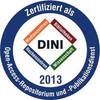Preview |
PDF, English
- main document
Download (21MB) | Lizenz:  Creative Commons Attribution-NonCommercial-NoDerivatives 4.0 Creative Commons Attribution-NonCommercial-NoDerivatives 4.0
|
Abstract
3D liquid crystalline (LC) structures are complex soft materials that can exhibit stimuli-responsive mechanical deformations based on their geometry and programmed director profile. Mechanical deformations occur when the programmed molecular orientations are disrupted, leading to collective chain-conformational changes in the polymer network. Various fabrication and alignment techniques are available to design their 3D shape. The director profile within LC polymers determines their actuation profile. More complex actuation demands complete control over the 3D structural design as well as 3D director alignment, independent of the structure’s axis. Achieving this 3D capability with traditional techniques remains challenging. Generally, elevated temperatures and high external fields are needed or coupling of the director to the structural design, which restricts the 3D control. It is also challenging to determine and characterize the 3D director orientation. For printing complex 3D shapes, these methods rely on sequential layer-by-layer or scanning systems which creates interfaces where the director alignment is distorted. This thesis aims to overcome these challenges by providing effective ways to: 1. Align the director in 3D within a structure, 2. Characterize and visually determine the 3D director orientation in real time, and 3. Enable single-shot, parallel fabrication of entire 3D complex structures with an independent 3D global director. Moreover, all these techniques for alignment, characterization, and fabrication can be utilized at room temperature. The first project focuses on spatially patterning complex 3D director orientations voxel by voxel using weak magnetic fields. We prepare an LC gel ink formulation containing the nonreactive mesogens E7 and 5CB, which facilitate magnetic alignment control at room temperature. The director can be oriented in any desired direction by rotating the external magnetic fields. A Wollaston prism with a spatially varying 3D optic axis is fabricated to demonstrate the arbitrary 3D director alignment control and fabrication of advanced 3D LC optical elements at room temperature. The second project introduces an optical method for characterizing 3D director orientation using a wedge cell technique, which enables the real-time visual determination of the 3D director orientation. It is based on the birefringence influenced by the out-of-plane director alignment. The in-plane and out-of-plane director orientations are measured and calculated based on polarization states and the angular separation of the beam splitting. This method provides a fast and reliable protocol for precisely determining the 3D director orientation. The third project aims to fabricate entire 3D structures in a single exposure at room temperature while maintaining the 3D director alignment independent of the structure’s geometry. To achieve this, optical holographic lithography is shown to generate 3D light intensity patterns for the direct polymerization of 3D shapes in a single exposure. The single shot holographic fabrication of 4D liquid crystals actuators is demonstrated.
| Document type: | Dissertation |
|---|---|
| Supervisor: | Fischer, Prof. Dr. Peer |
| Place of Publication: | Heidelberg |
| Date of thesis defense: | 30 June 2025 |
| Date Deposited: | 18 Aug 2025 07:57 |
| Date: | 2025 |
| Faculties / Institutes: | Fakultät für Ingenieurwissenschaften > Institute for Molecular Systems Engineering and Advanced Materials |









